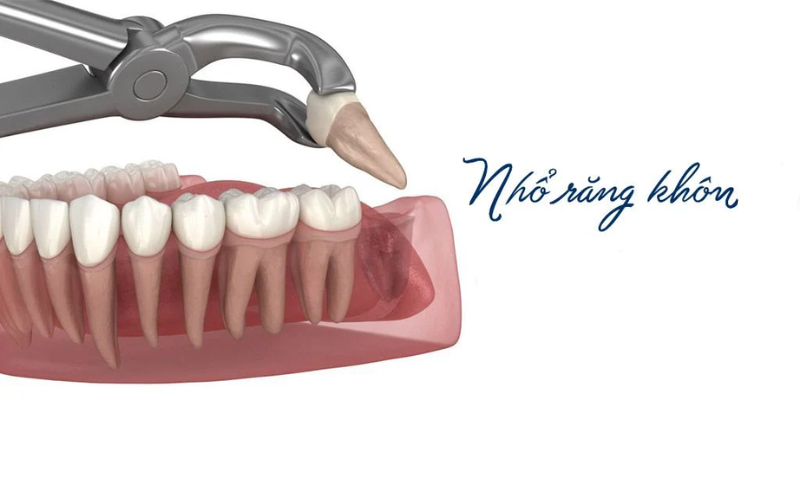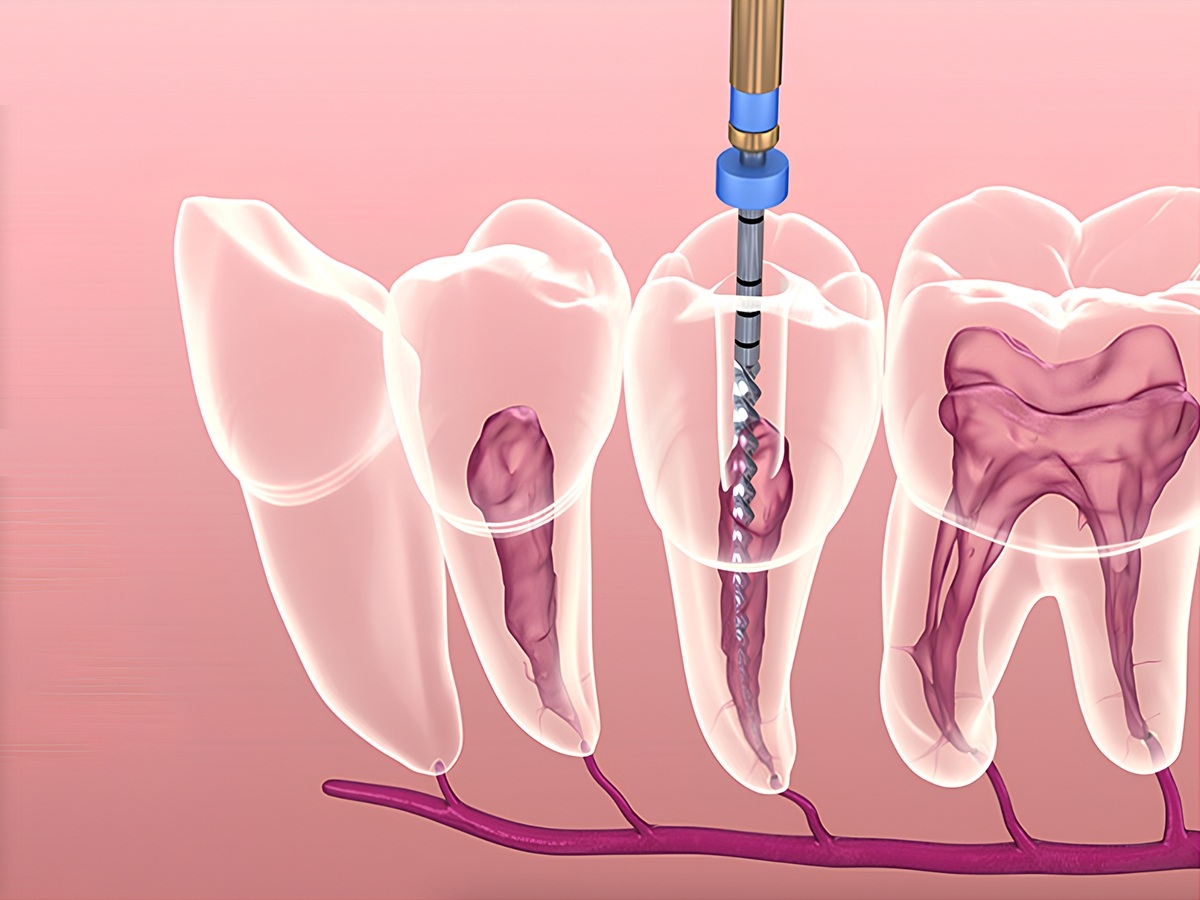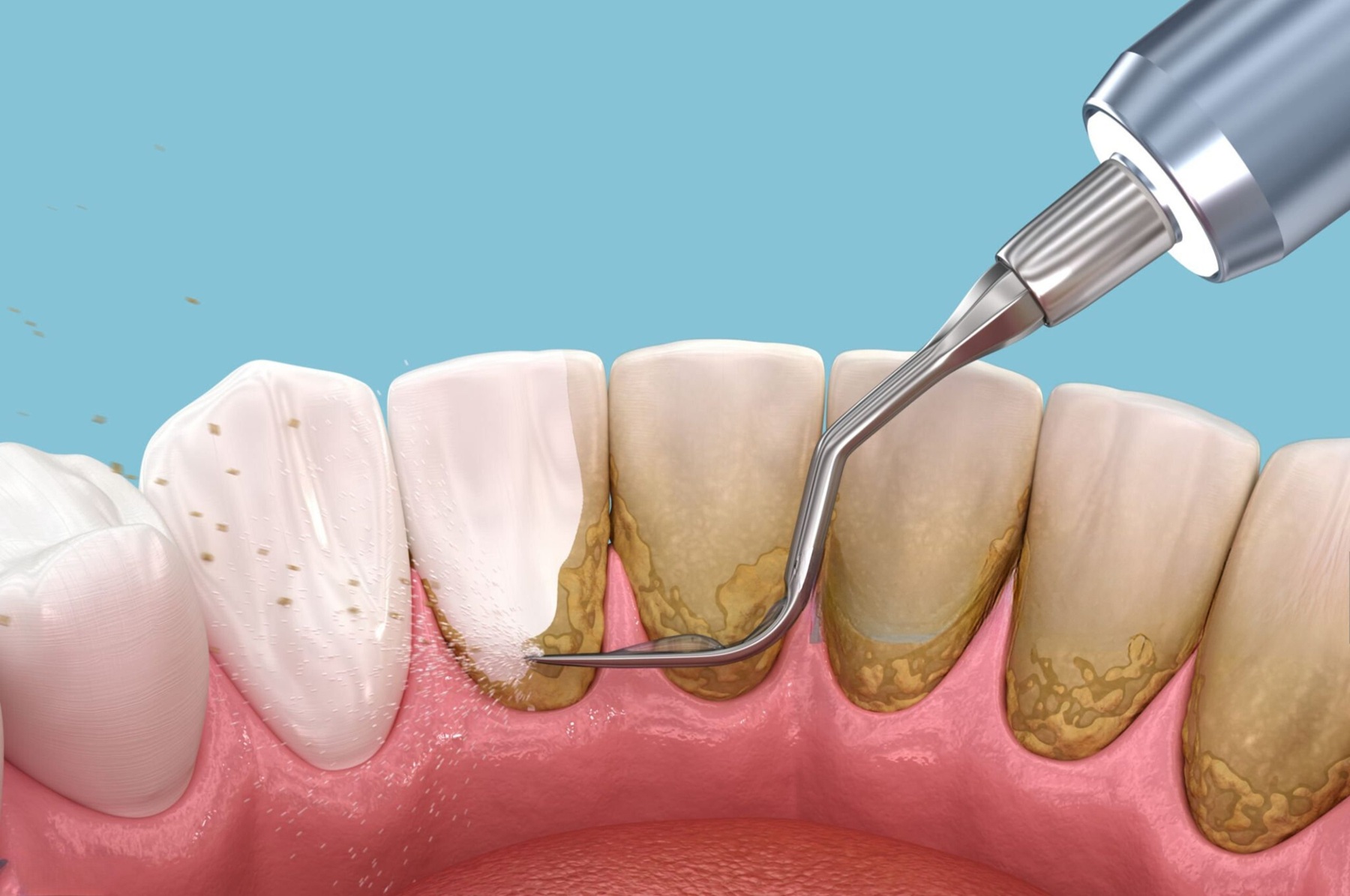There are approximately 2 billion people worldwide affected by tooth decay and 514 million children with dental caries in their baby teeth. Dentists treat cavities using dental techniques to prevent bacteria from further destroying the tooth surface. Among various treatments, dental filling is the most commonly used technique today. So, what is dental filling? How does the procedure work? Let’s follow Amanda Dental Clinic to explore the details below.
What is Dental Filling?
Dental filling is a dental technique that uses artificial materials to fill holes or gaps on the enamel surface of decayed, broken, or damaged teeth.

The main purpose of dental filling is to seal cavities, preventing bacteria from entering and damaging the pulp and internal tooth tissues. Additionally, this technique helps restore the shape and function of the tooth, returning it to its original state. Many patients with tooth decay often experience sensitivity due to lost enamel, and filling can significantly relieve this discomfort.
When is Dental Filling Needed?
According to the World Health Organization (WHO), it is estimated that 3.5 billion people globally have oral health issues, with three out of four affected people living in middle-income countries.
Dental filling is a common dental procedure usually applied in the following cases:
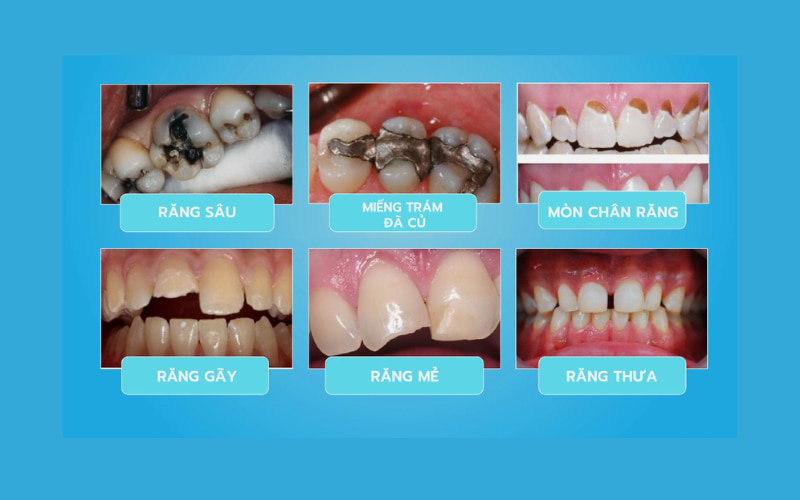
Filling for Tooth Decay
Tooth decay is the main reason for needing dental filling. It occurs when bacteria combine with sugar to form acids that attack the teeth, creating black holes. If not treated promptly, decay can reach the pulp and tooth root, causing pain and possibly requiring extraction.
Common signs of tooth decay include:
- Sudden toothache;
- Increased tooth sensitivity;
- Visible holes in teeth;
- Discoloration (black, brown, white);
- Toothache after eating hot, cold, or sweet foods.
Filling for Chipped Teeth
Teeth can be damaged by accidents, trauma, biting hard objects, or strong mechanical forces. These can cause cracks or chips that affect the tooth structure.
If detected early, the dentist can use the same filling technique as for cavities. The process includes cleaning the tooth to remove bacteria and then filling the damaged area with material for restoration.
Filling for Small Gaps Between Teeth
For individuals with gaps between teeth due to uneven tooth size or improper chewing habits, dentists often recommend cosmetic filling. This helps close gaps and align the teeth.
This method is suitable when the gap is about 2mm. For larger gaps that may affect aesthetics if filled, the dentist may suggest braces or porcelain crowns instead.
Replacing Old Fillings
When an old filling is damaged, worn out, or no longer adheres properly, the dentist will remove and replace it. This includes removing the old material and cleaning the area before applying a new filling.
Filling for Fractured Teeth
Cracked or chipped teeth caused by strong impacts—accidents, trauma, biting hard objects—can damage the tooth structure.
If detected early, the dentist can proceed with a filling just as in treating decay. The process includes cleaning the tooth to remove bacteria and using filling material to restore the damage.
Common Dental Filling Materials
When needing a dental filling, the choice of method and material is made after consulting with a dentist. They will consider the size and location of the cavity to determine the best material. Several popular options are available today.
Amalgam (Silver Fillings)
Amalgam is a silver-colored filling material made from a mix of metals like mercury, silver, tin, and copper. Though durable and affordable, it is less used today due to its unnatural color and health/environmental concerns.
The U.S. FDA advises against using amalgam fillings in pregnant women and children under 6.
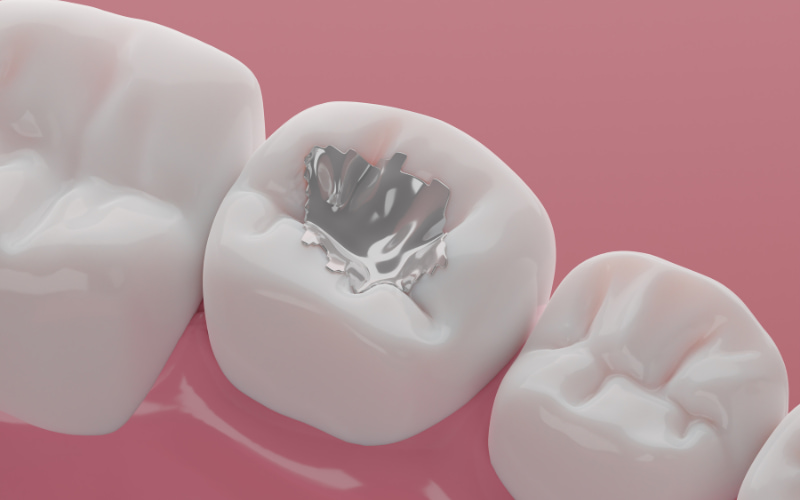
Composite Fillings
Composite is a durable filling material that can withstand moderate chewing pressure, suitable for small to medium cavities. It closely resembles natural tooth color, making it ideal for front and back teeth.
Despite its aesthetic appeal, composite fillings last around 5 years and may chip or break in large cavities due to limited strength.
Porcelain Fillings
Porcelain (inlay/onlay) fillings are made in a lab using a mold of the patient’s tooth and then permanently bonded to the tooth. Porcelain matches natural teeth, resists staining, and can cover the entire surface, though it is relatively expensive.
GIC (Glass Ionomer Cement)
GIC is made from polyacrylic acid and fluoroaluminosilicate glass. It’s cost-effective and often used for fillings that release fluoride to help prevent decay.
Best suited for baby teeth or front teeth that don’t bear much chewing force, but less durable than composite.
Gold Fillings
Gold fillings are made from alloys of gold, copper, and other metals like titanium. Gold has been used in dentistry for over 1,000 years due to its exceptional durability. However, it’s more expensive than amalgam and rarely used for front teeth due to its color.
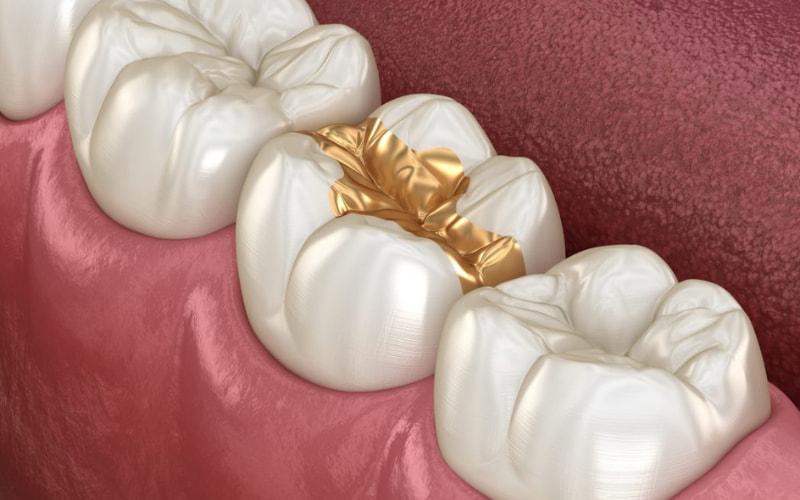
Is Dental Filling Painful?
Dental filling is generally painless, especially with modern dental techniques and anesthesia. However, pain levels vary depending on the case:
- Severity of damage: Deep cavities reaching the pulp may cause discomfort during filling. However, this pain is usually temporary.
- Individual sensitivity: Sensitive individuals may feel slight discomfort even from minor procedures. Others may feel no pain at all.
- Filling material: High-quality materials cause less irritation and discomfort. Low-quality fillings may trigger pain or sensitivity.
- Dental clinic: Choosing a reputable clinic with skilled dentists ensures better outcomes and cost-effective treatment.
Dental Filling Procedure
Although simple, dental filling should be performed by skilled dentists at reputable clinics to ensure safety and aesthetics. The basic steps include:
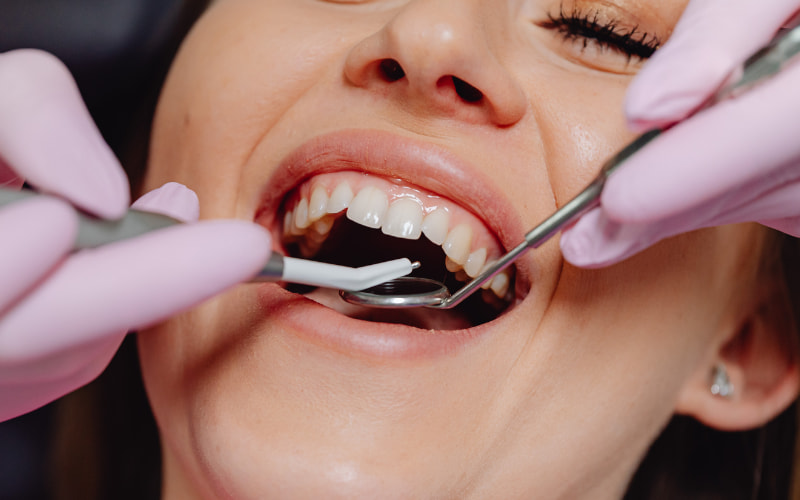
- Step 1 – Examination & Consultation: The dentist examines the damaged tooth area, determines the cavity size, and advises on suitable filling materials.
- Step 2 – Cleaning: The mouth is rinsed, and the target tooth is disinfected to prevent infection during and after the procedure.
- Step 3 – Anesthesia & Shaping: Local anesthesia is applied. The decayed part is removed, and the cavity is shaped for optimal filling placement.
- Step 4 – Filling: The chosen material is applied in liquid form and hardened using a curing light (about 40 seconds) to secure it in place.
- Step 5 – Polishing: Excess material is removed, and the surface is polished to ensure comfort and aesthetic quality.
The procedure typically takes 20–30 minutes depending on the damage and material used.
Risks of Improper Dental Filling
Risks and complications of incorrect fillings include:
- Itching or pain when chewing, especially with hot or cold foods, in the first few days.
- Improper filling may damage nerves, causing neurological issues.
- Poor oral hygiene post-filling can lead to infection at the filling site.
- Incorrect technique may cause long-term dental health problems.
Are Fillings Durable? When Should They Be Replaced?
Material choice should weigh the pros and cons. For front teeth, composite is often preferred for aesthetics and durability.
Visit clinics with skilled dentists and modern equipment for safe, effective results.
After filling, maintain proper dental care, avoid hard or colored foods, don’t use teeth as tools, floss, and brush properly.
Cosmetic Dental Filling Prices at Amanda Dental Clinic
The cost of a cosmetic filling depends on factors like material used, number of teeth, and clinic pricing.
Refer to the specific pricing at Amanda Dental Clinic in the table below:
| Service | Unit | Price (VND) |
| Tooth filling with Fuji, Composite | 01 Tooth | 250,000 |
| Eugnat filling | 01 Tooth | 100,000 |
*** Note: This is a reference price. For accurate costs, visit Amanda Dental Clinic or contact the hotline at 1900 9009 for consultation.
Why Choose Amanda Dental Clinic for Dental Filling?
Looking for a reliable, high-quality clinic for treating decay, chips, or cosmetic enhancement? Amanda Dental Clinic offers outstanding filling services with major advantages:
Experienced Dentists
Our team of maxillofacial dentists at Amanda are highly skilled in cosmetic fillings, with strong technical knowledge and aesthetic sense, ensuring natural results that complement your smile.
Modern Facilities
Amanda Dental Clinic is equipped with state-of-the-art tools, including digital X-ray machines, advanced curing lights, and fully sterilized dental instruments.
Genuine Filling Materials
We use 100% AUTHENTIC imported materials from world-renowned brands. Composite materials are durable, pressure-resistant, and natural-looking, ensuring safety and long-term results.

How to Care for Teeth After Filling
Proper post-filling care is essential for durability and preventing oral issues. Here are detailed instructions:
- Avoid chewing for at least 2 hours after the procedure to allow the material to fully set.
- Avoid hot or cold food and drinks for a few hours post-filling.
- Avoid hard foods for a few days to prevent stress on the new filling.
- Avoid colored foods and drinks like coffee, tea, red wine, or tobacco as they may stain the filling.
- Brush twice daily, floss, and use mouthwash to prevent plaque and future decay.
- Have dental checkups every 6 months to monitor fillings and detect issues early.
Timely dental fillings not only prevent severe oral problems but also save you time and money. Take charge of your dental health with regular checkups for a confident, healthy smile.




